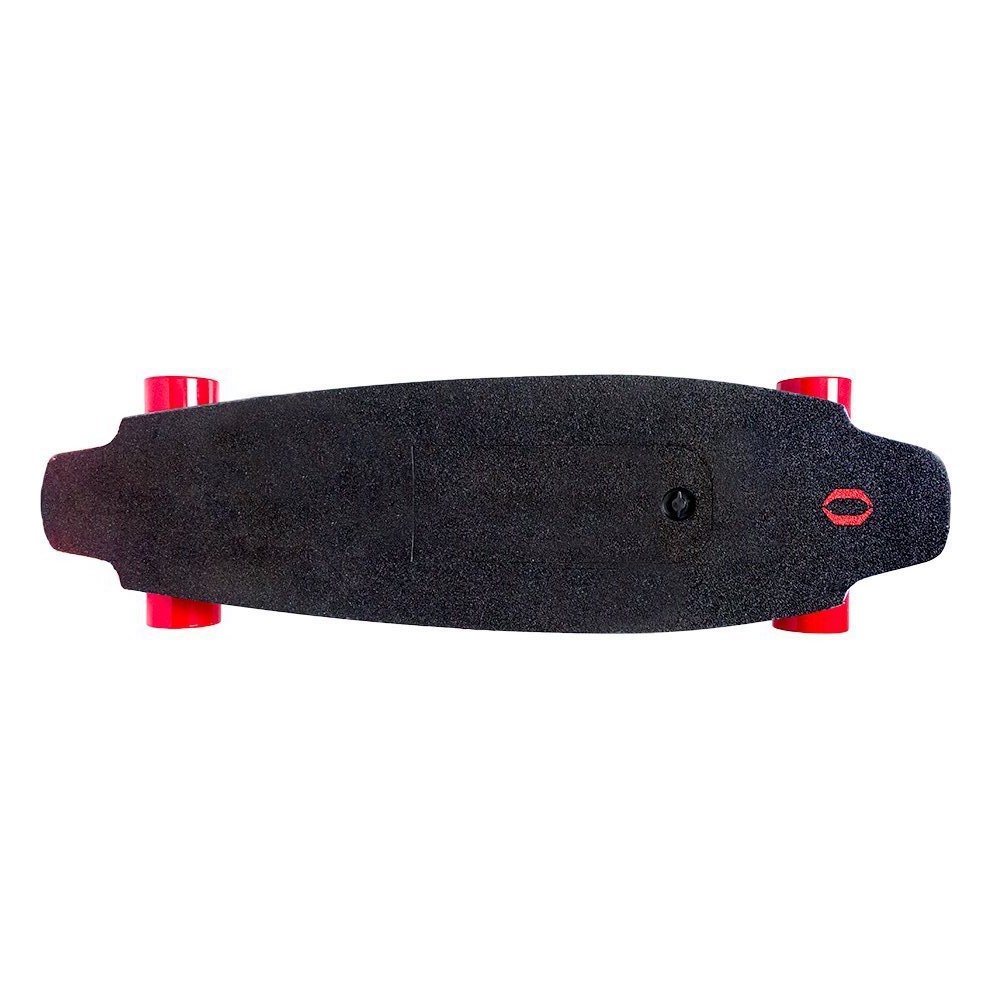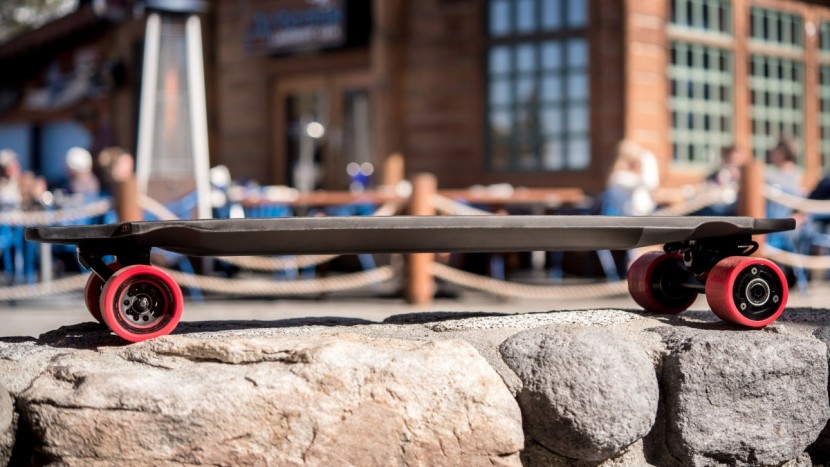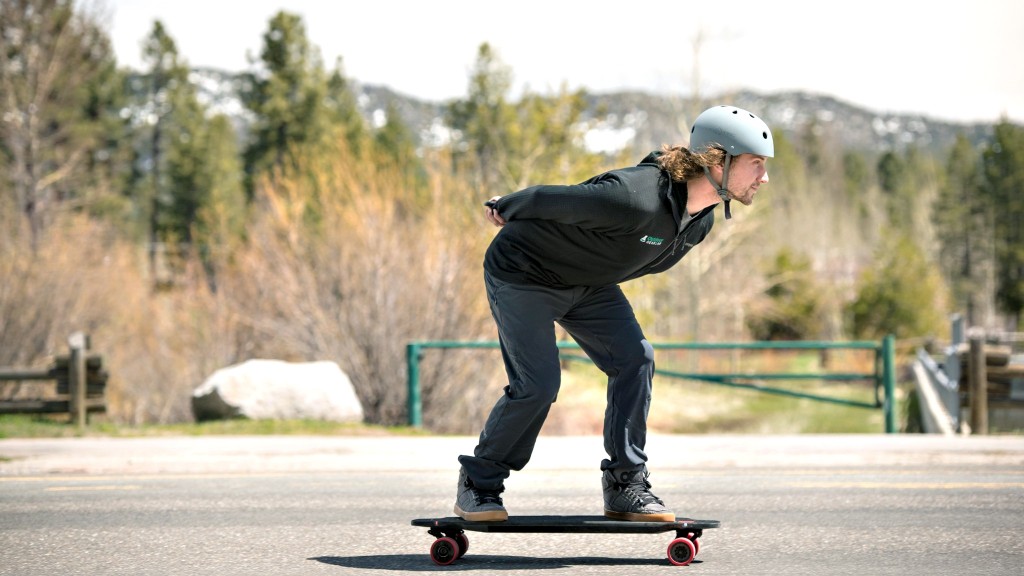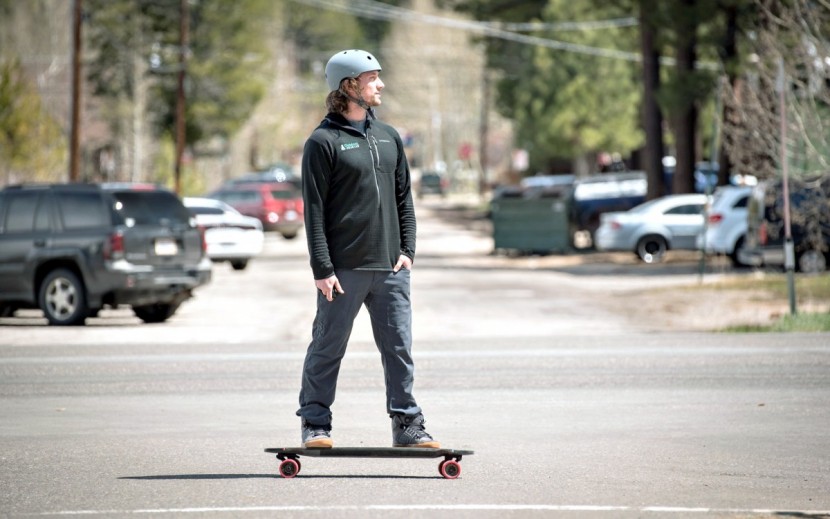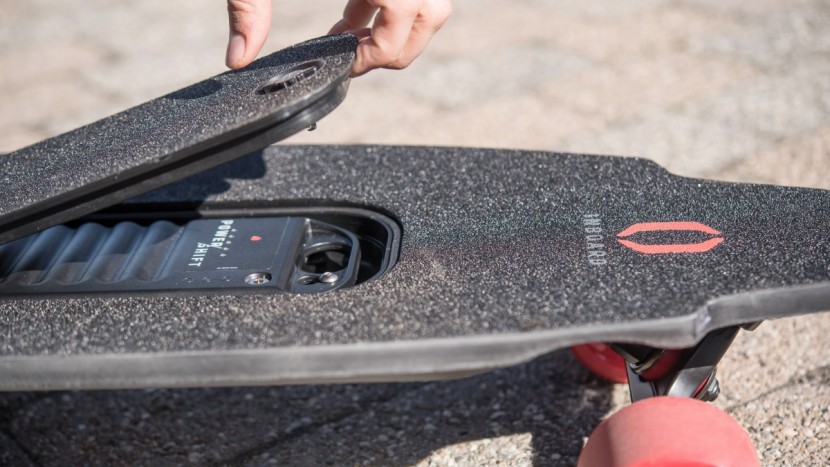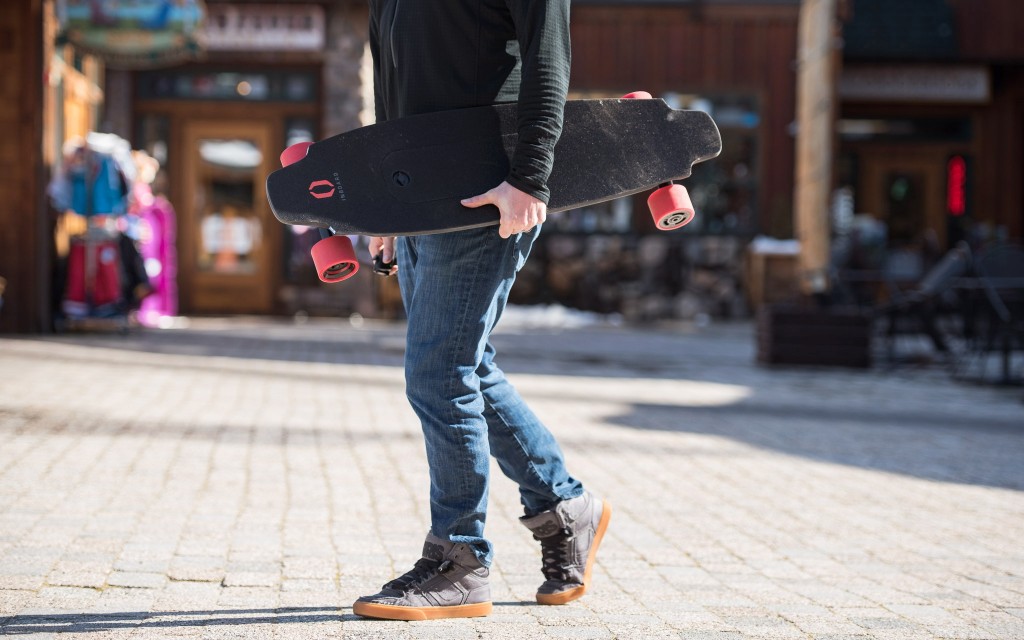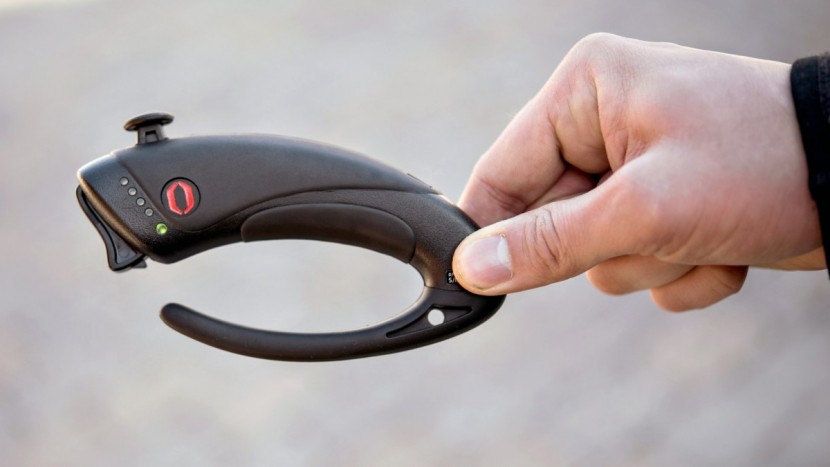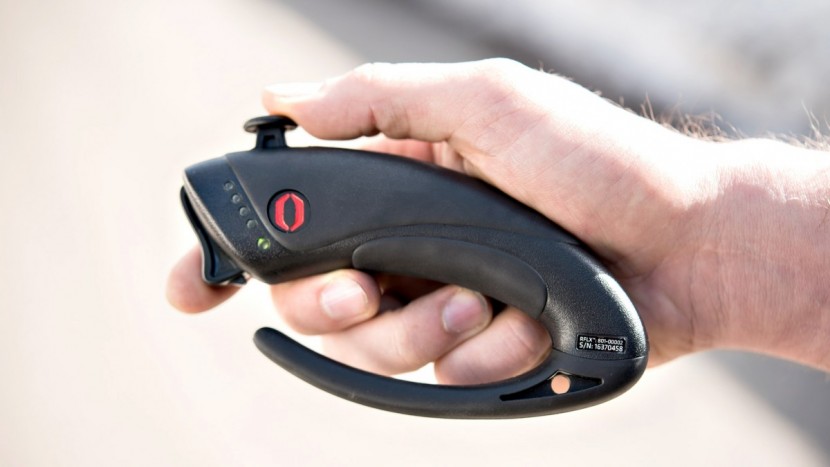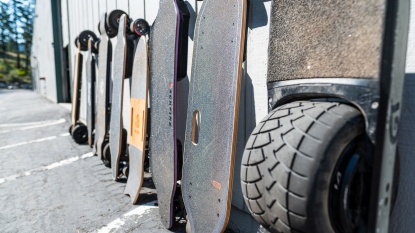Inboard M1 Review
Our Verdict
Our Analysis and Test Results
While the Inboard M1 does look undeniably sleek with its recessed battery and concealed motors, its performance, on the whole, was rather mediocre. The swappable batteries are a nice feature but at the cost of $250 per extra battery, the additional range comes at a steep price.
Speed
Speed was king in our review, with this metric taking credit for 25% of the final score for these products. We tested this by evaluating both the board's top speed, as well as its acceleration. We timed how long it took each board took to complete a set distance on flat ground, giving the board plenty of runway, so it was at its top speed before it crossed the start line. This was to test the maximum speed, with a similar test being performed from a standstill to compare the relative acceleration of each board and determine scores. The Inboard M1 did quite well, earning a 6 out of 10 in this metric.
It took this model about 7.2 seconds to complete our 200' test track when entering at its top speed, working out to a tested maximum speed of around 19 mph with our average-sized, adult male tester. This made it the fourth fastest board of the group, surpassed by the Evolve GT, Boosted Dual+, and the Genesis.
The Inboard's performance dropped slightly in our acceleration test, dropping back into the middle of the pack. The hub motors on this board were just a little slower to respond and don't have quite as much torque as the belt-driven models, meaning you don't get off the starting line and up to speed as quickly.
Range
The next rating metric in our test — Range — takes credit for 20% of the overall score. This metric breaks down into two parts: economic range and charge time. The Inboard delivered a somewhat average performance overall, earning it a 4 out of 10. To test this, we ran each board on a medium or economical riding profile. We used the middle of the three riding modes on the Inboard for the range test, with this board definitely failing to impress. It lasted for about 30 minutes, traveling just over six miles before calling it quits.
The remote does start to vibrate to alert you when the battery is running out of juice. The Inboard did redeem itself a bit by charging decently fast, taking 90 minutes in our test to complete — short enough that you can bring the charger with you and recharge at your destination to get back home. This board does have the unique feature of being able to buy additional batteries and swap them in to extend the range.
However, these are around $250 a pop — a pricey addition — especially when you take into account the already high list price for this board and the fact that you would have to at least two more to match the range of the Evolve GT or Metroboard. We also noticed that leaving the battery in the Inboard while not in use would deplete it over a few days, something that was not a pleasant surprise when we went to go ride it.
Ride
Our Ride metric — also comprising 20% of the total score — encompassed how well each board handled bumpy terrain, hitting cracks in the road, as well as how comfortable it was to ride. Essentially, this metric is how drawn to each board we were, whether or not we would pick it for a quick ride around town or prefer to leave it behind and select a different model. The Inboard M1 earned a 6 out of 10 for being a solid ride, being comfortable to ride and handling obstacles reasonably well.
The deck was nice and wide on this board, making it about as comfortable to ride around as the Evolve. This board doesn't have a ton of camber but was the most comfortable by far to ride around in a free-wheeling mode, like a normal skateboard.
This model does a reasonable job at handling uneven or bumpy pavement, basically handling identical to a typical longboard. It also did about average at traversing cracks, once again handling just like a longboard, with no low-clearance areas that were prone to bottoming out. All in all, the Inboard wasn't necessarily our first choice to grab, but we didn't dislike it either.
Hills
One of the main reasons you may want to purchase one of these products is to ride up hills effortlessly. If that is the case, then you probably want to consider an alternative model to the Inboard. This board is not the best at hills, meriting a subpar 4 out of 10 in our Hills rating metric, which made up 15% of the final score.
To test this, we rode each board up successively steeper hills, noting at what % hill grade the board could no longer make it. With our adult male tester, we found that the Inboard barely — we mean barely — crept up an 8.75% grade hill, exhibiting a substantial discrepancy with the manufacturer's claimed 15% grade climbing capabilities. If you live in a hilly area and get the Inboard, be prepared to have to push up all but the shallowest hills.
Build
The Build metric, accounting for 10% of the overall score, consisted of scoring the weight of each board, the ergonomics of the remote, how responsive the board was to the commands from the remote and the throttle curve, how supportive we found the customer service to be, and whether or not the board had regenerative braking. The Inboard did quite well, meriting a 6 out of 10.
This board was a little on the heavy side, weighing in at just shy of 17 lbs.
The remote stands out from the others a bit with its long rubber tail, but we actually found this to be quite nice, as you can easily clip it to your belt or pocket. You can also remove it if you find it bothersome.
The remote isn't the most intuitive initially but is actually pretty good when you get the hang of it. You can view both the battery and the remote charge level through indicator lights on the remote, with the remote status being continuously lit, and the board's status illuminating when the button is pressed twice. It was a little more frustrating to see which riding profile you were in, requiring you to cycle through using the button and listened to the beeps. We also weren't the biggest fans of the excessively tall throttle, which protruded the highest out of all the models we tested.
The board was reasonably responsive to remote commands, with only a slight delay detected while riding it. There is an email, telephone number, and online chat to contact the manufacturer with and they were decently responsive to our inquiries. Finally, the Inboard does have regenerative braking.
Braking
While our first metric tested how fast the Inboard could go, our final metric assessed how fast the board could stop. The Braking metric made up the remaining 10% of the total score and consisted of two test: controlling speed on a descent and stopping distance on flat ground from a moderate speed. The Inboard performed slightly above average, earning a 6 out of 10 for its efforts.
The first test we conducted was controlling descent speed. The Inboard failed to completely stop while heading down a 10% grade, but slowed to a crawl, allowing you to step off with ease. It did alright heading down a 15% grade, slowing down to a reasonable speed to step off and bail from, but failing to instill confidence in us to try it on anything steeper.
To test stopping distance, we rode each board at a medium speed (12 mph) and measured how long it took to completely stop from the point when the brakes were fully engaged. Averaging the results of three trials, it took the Inboard about 35' to come to rest.
Value
The Inboard M1 isn't a great value pick, costing the same as a top-tier model while delivering a mediocre performance.
Conclusion
All in all, the Inboard M1 is a reasonably fun board to ride around on flat ground. It is fast, comfortable to ride, handles bumps and cracks reasonably well, and looks great with its concealed motor and batteries. Unfortunately, this board is stopped by the slightest of hills, doesn't have the best acceleration, and is a bit on the heavier side.


